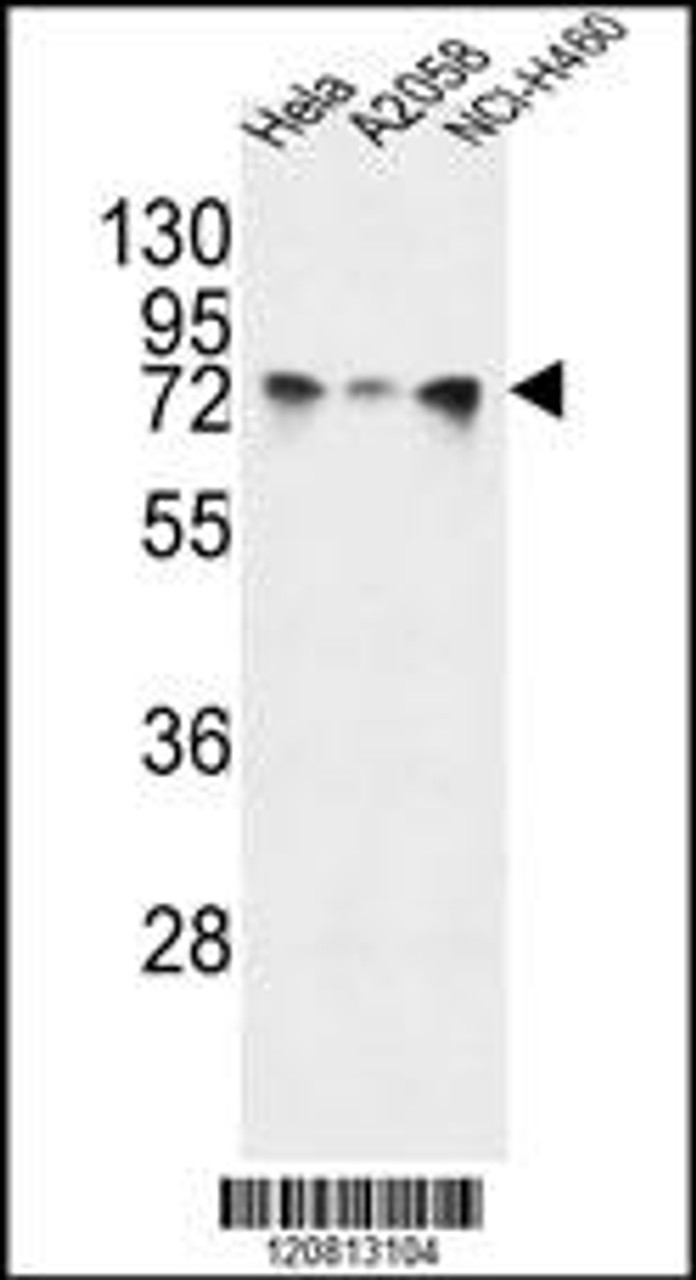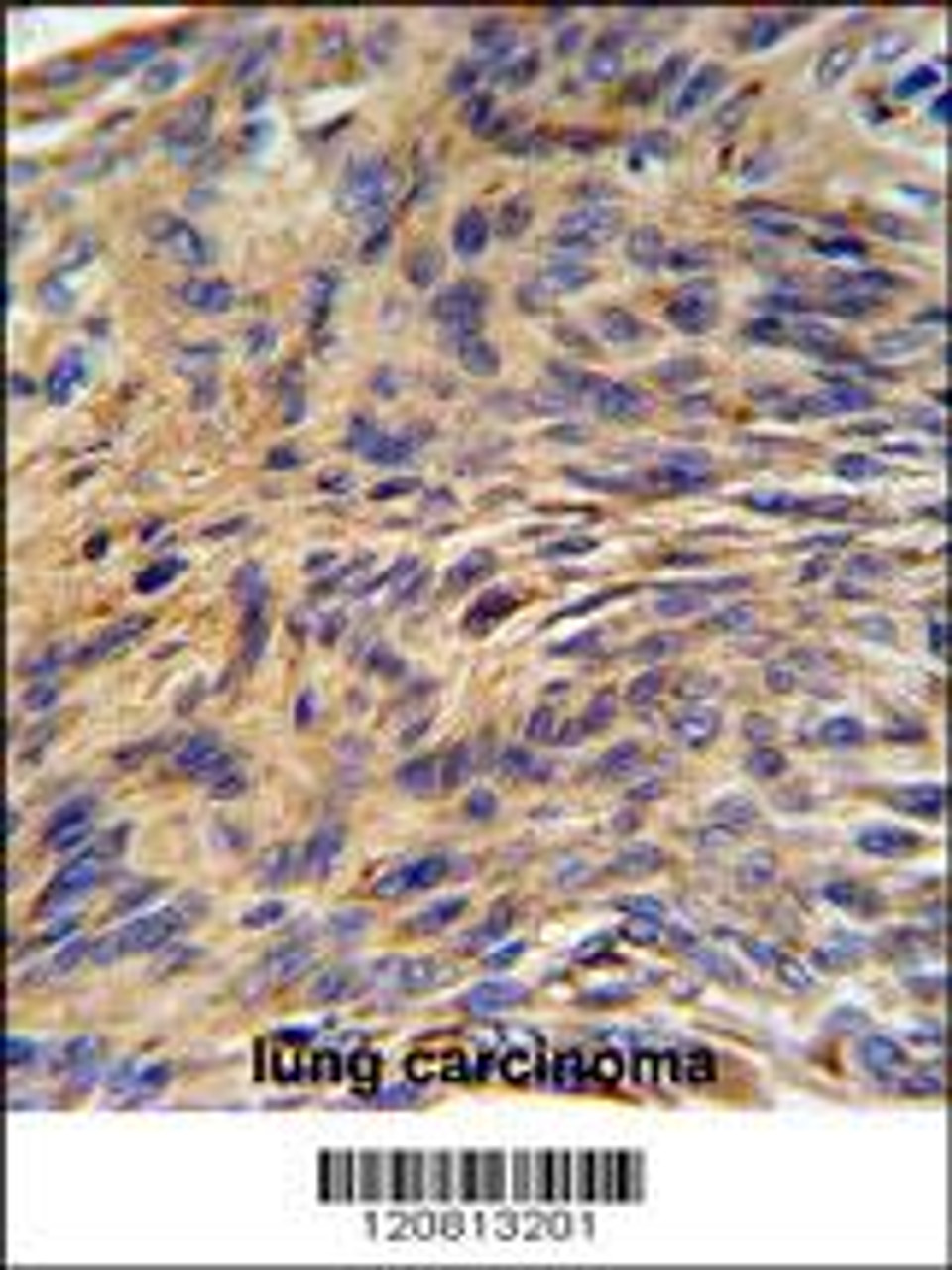Product Description
HSPA5 Antibody | 61-767 | ProSci
Host: Rabbit
Reactivity: Human, Zebrafish
Homology: Predicted species reactivity based on immunogen sequence: Bovine, Chicken, Mouse, Rat
Immunogen: This HSPA5 antibody is generated from rabbits immunized with a KLH conjugated synthetic peptide between 261-289 amino acids from the Central region of human HSPA5.
Research Area: Other
Tested Application: WB, IHC-P, IF
Application: For WB starting dilution is: 1:1000
For IHC-P starting dilution is: 1:50~100
For IF starting dilution is: 1:10~50
Specificiy: N/A
Positive Control 1: N/A
Positive Control 2: N/A
Positive Control 3: N/A
Positive Control 4: N/A
Positive Control 5: N/A
Positive Control 6: N/A
Molecular Weight: 72 kDa
Validation: N/A
Isoform: N/A
Purification: This antibody is purified through a protein A column, followed by peptide affinity purification.
Clonality: Polyclonal
Clone: N/A
Isotype: Rabbit Ig
Conjugate: Unconjugated
Physical State: Liquid
Buffer: Supplied in PBS with 0.09% (W/V) sodium azide.
Concentration: batch dependent
Storage Condition: Store at 4˚C for three months and -20˚C, stable for up to one year. As with all antibodies care should be taken to avoid repeated freeze thaw cycles. Antibodies should not be exposed to prolonged high temperatures.
Alternate Name: 78 kDa glucose-regulated protein, GRP-78, Endoplasmic reticulum lumenal Ca (2+) -binding protein grp78, Heat shock 70 kDa protein 5, Immunoglobulin heavy chain-binding protein, BiP, HSPA5, GRP78
User Note: Optimal dilutions for each application to be determined by the researcher.
BACKGROUND: When Chinese hamster K12 cells are starved of glucose, the synthesis of several proteins, called glucose-regulated proteins (GRPs) , is markedly increased. Hendershot et al. (1994) [PubMed 8020977] pointed out that one of these, GRP78 (HSPA5) , also referred to as 'immunoglobulin heavy chain-binding protein' (BiP) , is a member of the heat-shock protein-70 (HSP70) family and is involved in the folding and assembly of proteins in the endoplasmic reticulum (ER) . Because so many ER proteins interact transiently with GRP78, it may play a key role in monitoring protein transport through the cell.
 Euro
Euro
 USD
USD
 British Pound
British Pound
 NULL
NULL














![HSPA5 Antibody [AMM22210G] HSPA5 Antibody [AMM22210G]](https://cdn11.bigcommerce.com/s-452hpg8iuh/images/stencil/500x659/products/870571/1162638/logo__92149.1659788186__82934.1659866704.png?c=2)

![HSPA5 Antibody [APR31107G] HSPA5 Antibody [APR31107G]](https://cdn11.bigcommerce.com/s-452hpg8iuh/images/stencil/500x659/products/871352/1163419/logo__92149.1659788186__60012.1659868028.png?c=2)